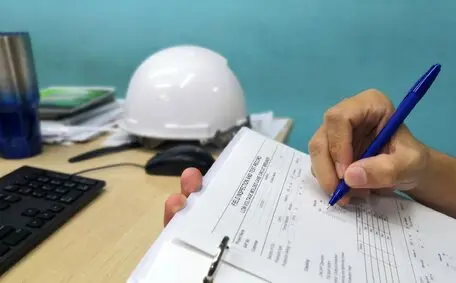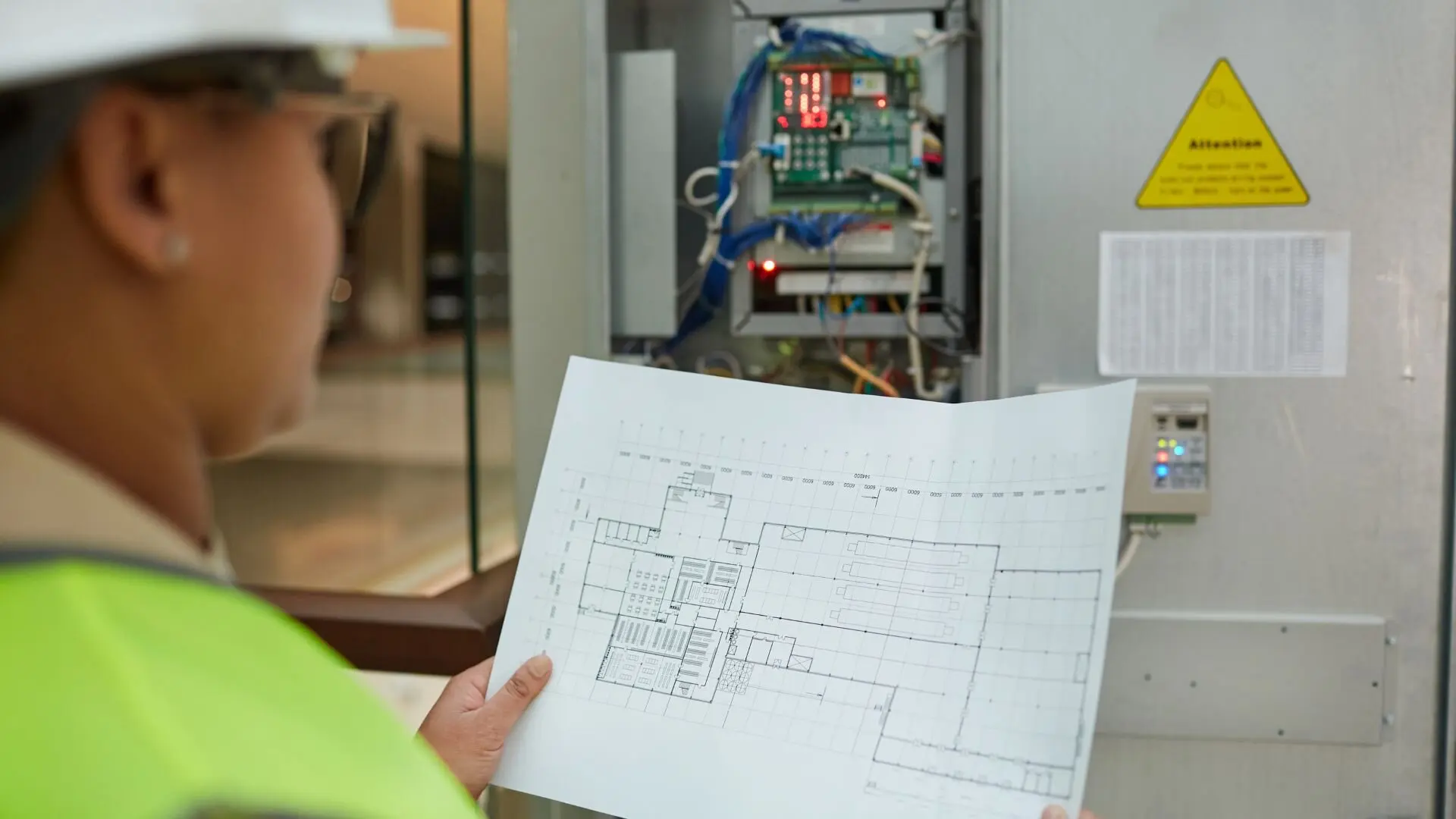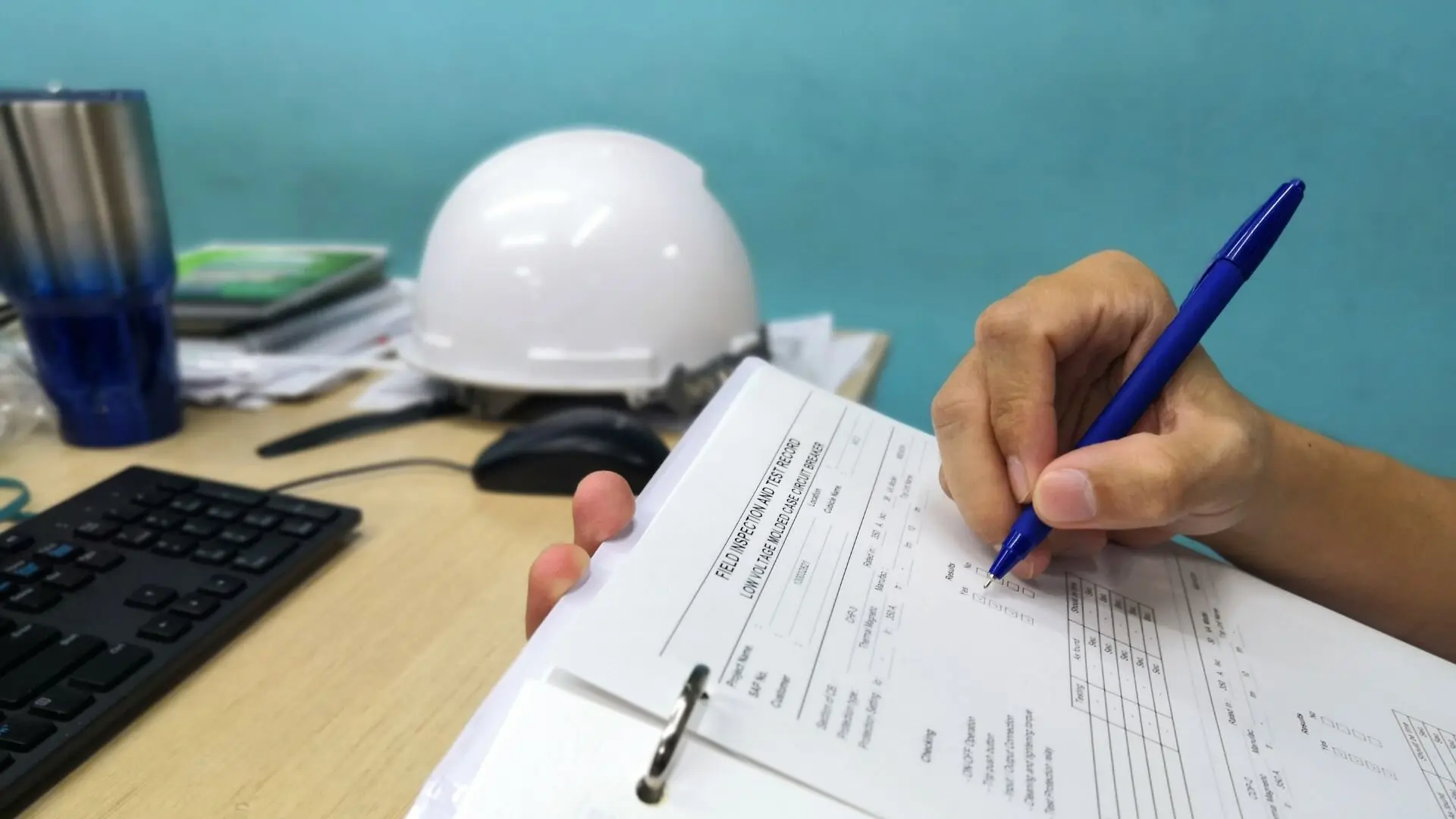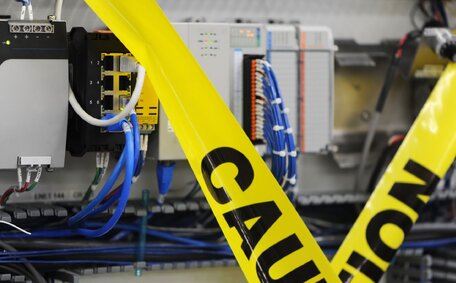It’s totally normal to feel pure excitement when moving into a new home. But before you start decorating or cramming every room with stuff, take a breath and get to know your new space safely. Scoping out the electrical situation ensures you don’t have any nasty surprises down the line.
Even in a recently updated home, it’s a good idea to take mini-inspections. Peek behind switchplates, venture into rarely-visited basements, and check wherever wires might be hiding. You should ensure that all fuses or breakers align with your planned appliances. Feeling uncertain? Hire a contractor for a thorough audit to put your mind at ease.
Better identifying any electrical risks early rather than on day one of your move. Then, you can truly relax knowing that all wiring and connections work correctly to safely handle your family’s needs. Catching flaws early helps make your dream home the cosy palace you deserve instead of a shocking nightmare! Let’s take a look at our electrical inspection checklist!
![2024 02 Inspecting Electrical Appliances In Home Inspecting Electrical Appliances Home]()
Thoroughly Inspect the Switchboard and Electrical Panel
As a homeowner, periodically inspecting your own electrical service panel and switchboard helps maintain safety between professional electrician visits. Carefully check if the panel’s main amperage rating is appropriate for your home’s electrical needs and all appliances/devices used.
You can’t directly check the underground capacity yourself, but if you notice circuits frequently tripping, it might be a sign they’re not sized big enough for your household demands.
Visually scan the interior panel wiring for any loose, disconnected, or corroded wires that could spark electrical fires - without touching anything. If you spot questionable issues inside, immediately contact a licensed electrician for evaluation. Also, confirm that your panel exhibits a verified ground wire connection and that the ground wires run downstream to individual 120v household outlets. Use outlet circuit testers to catch any ground faults.
Check your home’s electrical layout blueprint to ensure the amperage labels on your circuit breakers match the expected loads—such as those for kitchens or AC units. If something’s off, jot it down for further assessment.
Without tampering with any components, visually inspect your panel and outlets for any signs of trouble. These checks are valuable between professional inspections and help catch problems early, which is crucial for prevention.
Evaluate the Safety of Your Home’s Electrical Wiring
As a homeowner, inspecting your internal electrical wiring for damage helps ensure safety between professional electrician visits. Carefully visually trace sections of accessible power cables looking for cracked, brittle or otherwise compromised insulation—any exposure risks hazardous shorts and leakage.
Also, scan wire connection points for loose, arched, or corroded terminals, which can ignite fires. If undersized for attached devices, wires may feel abnormally warm, indicating dangerous overload strain. Ensure all cabling stays shielded inside protective conduit pipes and junction boxes, preventing unintended contact, especially for children and pets.
By safely documenting any electrical issues, you empower yourself to make timely repairs when necessary.
Keep your behind-the-walls system in reliable shape through proactive wiring checks as part of routine electrical self-audits. Identifying issues early could prevent catastrophic structure failures or shocking accidents.
Methodically Test All Electrical Outlets and Switches
![2024 02 Inspecting Electrical Inspecting Electrical]()
As a diligent homeowner, regularly checking electrical outlets and switches identifies hazards before professional assessments. Carefullyinspect outlet plates for signs of heat discolourationor cracks indicating loose, unsafe connections behind walls. Test using an outlet tester to catch any missing essential ground wires that increase electric shock risks if appliances short circuit.
Pay special attention to kitchen, bath and laundry areas with leaks and moisture. Ensure outlets near plumbing fixtures or water sources exhibit “RCD protected” markings, implementing vital ground fault safety measures.
Visually scan behind cover plates to confirm ample wire length with no messy bundles overcrowding connections in junction boxes. Consider replacing outdated two-pronged outlets with modern grounded versions for superior equipment protection.
Document any potentially deficient outlets to evaluate further. While avoiding improper disassembly yourself, visual outlet spot checks between comprehensive electrician system inspections provide a prudent safeguard. Combining professional and homeowner attention makes electrical oversight seamless across RCD test resets and more.
Evaluate the Safety of Electrical Appliances
Even in brand-new homes, you might find older appliances that come with their own electrical risks. During your routine checks, give your major equipment a good once-over—take a close look at the power cords, plugs, and any connections.
Scan for cracked insulation and exposed copper that pose shock or fire risks. Replace any deteriorated parts or fully upgrade suspicious appliances with grounding issues lacking modern three-pronged plug integration.
To assess the household’s amperage capacity, switch on major appliances simultaneously like the central AC, oven, and dishwasher. Listen for any unusual humming or breakers that frequently trip. These could be signs of overloaded circuits.
For network electronics like security systems and home entertainment, double-check that external control boxes exhibit no loose interior connections vulnerable to disconnects.
Pay special attention to high-wattage exterior equipment like pool pumps or landscape lighting transformers. Confirm they connect to exclusive RCD-protected outlets as required, not shared internal circuits at maximum capacity. Reference all equipment owner manuals to ensure nothing demands more power than designed household circuits safely supply.
Check for Critical Safety Devices
In addition to inspecting wiring and outlets, homeowners should routinely verify the operation of key electrical safety devices between professional electrician visits.
Test all RCDs using the test/reset buttons to confirm they trip power during simulations of current leakage to the ground. Properly functioning GFCIs are critical for preventing human shocks near plumbing fixtures.
Likewise, press test buttons on smoke detectors to validate alarm triggers indicating functional sensors. Push annual replacement reminders into home maintenance calendars.
For whole home surge protection, visually check external suppression system boxes on the electrical panel to ensure all status lights/indicators glow properly. This verifies continued protection against external voltage spikes entering from the utility line on the pole.
Following manufacturer guidance, use outlet testers to spot-check the household electrical system for wiring faults and visually scan for deficiencies. Layering homeowner preventative checks on top of professional examinations provides fulsome oversight guarding safety.
A Comprehensive Inspection is Essential to Electrical Safety
A cursory look at your home’s visible electrical components by an untrained eye won’t cut it. Often, dangers like faulty wiring, overloaded circuits, and defective equipment are hidden, needing a deep dive from a qualified local electrician to uncover.
During an inspection, your electric meter will be checked for possible defects. Other than ensuring the electrical meter logs the correct wattage, your electrician will also check if the meter is installed properly or if its mechanisms have become defective due to wear and tear.
Safety should be the top concern for all property owners and managers. Take the time to schedule a professional electrical inspection that covers all areas of the home’s electrical system according to national and local safety codes and standards. Identifying and resolving electrical issues now prevents injuries, fires, and costly repairs later.
In-depth Review of the Electrical Meter and Service Drop
The electric meter and service drop are often overlooked but crucial components of your home’s electrical system. The service drop connects the electrical utility to your home, and the meter measures how much electricity you use. As part of your inspection, consider the following:
- Inspect the electric meter for signs of tampering, damage, or malfunction. A faulty meter can be a safety hazard and may result in incorrect electrical billing.
- Ensure that the service drop is securely attached to the house and free from damage or wear that could result in a dangerous situation, particularly during adverse weather conditions.
- Verify that the service mast, the pipe above your meter, is in good condition and that all clamps and straps are firmly in place.
- Check for proper clearance around the meter and service drop. Overgrown vegetation or nearby conductive materials can pose a significant electrical fire or shock risk.
- Assess the condition of the meter base and enclosure. Any signs of rust, damage, or water ingress could compromise the electrical system’s safety and functionality.
Regular Maintenance and Upgrades
![2024 02 Undertaking Safety Check Undertaking Safety Check]()
After the initial inspection, it’s also important for new homeowners to consider the age of the electrical system and plan for regular maintenance or necessary upgrades. This can include:
- Replacing old or malfunctioning circuit breakers that may not trip under overload conditions.
- If the home still has an outdated system, upgrade from a fuse box to a modern circuit breaker panel.
- Installing additional circuits or outlets to accommodate modern electrical demands and reduce the use of extension cords.
- Scheduling periodic inspections, particularly if the home is over 25 years old or has had major renovations.
Regular maintenance by a licensed electrician can help ensure your home’s electrical system remains safe, efficient, and up to code. This proactive approach secures the integrity of your electrical infrastructure and gives you peace of mind as a homeowner.
Trust the Experts at Bright Force Electrical
With extensive experience inspecting brand-new electrical installations and electrical systems in existing homes, Bright Force Electrical can quickly pinpoint electrical hazards that other electricians and homeowners easily miss.
Our technicians use advanced diagnostic tools like thermal cameras to validate that all the electrical components are functioning correctly and free of defects. Contact us to schedule professional electrical inspections of your new home’s electrical system and receive a detailed analysis of any repairs needed to keep your family safe. Don’t take chances with electrical safety - get peace of mind with an expert electrical inspection from Bright Force Electrical!
FAQs
Should I check the electrical meter outside my new home?
Inspect the external electrical meter to ensure it is appropriately installed without damaged casing or exposed wires. Also, check that it is not obstructed and that the cables have no cracks.
How do I know if the previous homeowners made any DIY electrical changes?
Look for signs of amateur electrical work like mismatched wires, outlets without ground prongs, or loose connections. Unpermitted work poses risks, so ask your inspector to check thoroughly.
Is using extension cords and power strips in a new home safe?
Improper use of extension cords and power strips can overload circuits. Have an electrician check your home’s circuits so you can handle them safely. Don’t use it as permanent wiring.
Looking at the breaker box, are there electrical issues?
While a homeowner can look for problems like rust, corrosion or leaks in the breaker box, many electrical issues are hidden from sight. An electrician needs to perform diagnostics testing to evaluate safety fully.











